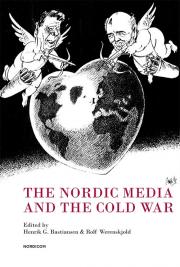Tillbaka
 Författare:
Författare: Rolf Werenskjold
Förlag: Nordicom
Mediatyp: Bok
Bandtyp: Häftad
Utgiven: 2022-10-19
Språk: Engelska
Vikt: 692g
ISBN: 87957-15-4
|
The Nordic media and the cold war
Rolf Werenskjold (Häftad)
Ej i detta bibliotek
Kategori:
Allmänt och blandat - Allmänt (Bs)
Beskrivande text
This book is about Nordic media and the Cold War. The Cold War was the great world conflict that emerged between East and West from 1945, which persisted ‒ with varying degrees of tension and intensity ‒ until the Berlin Wall fell in 1989, the German reunification in 1990 and the collapse of the Soviet Union in 1991. In those 46 years, the mass media also changed in most countries in the world, from a situation where the press dominated to a multimedia condition at the beginning of the 1990s. This means there is a longstanding correlation in time between the Cold War and what we consider to be the modern mass media and communications, but still we know actually very little about how this convergence actually materialized ‒ for example in the Nordic countries. It is important therefore, to raise such a topic as a theme for scientific research, but it is far more difficult to answer it.
It is not difficult to view the United States and the Soviet Union as the main actors in the Cold War ‒ and the divided Germany as its main hotspot ‒ with the Berlin Wall as the conflict’s foremost symbol. All this is true enough, but this also makes it easy to forget that the Cold War was going on everywhere, and that it affected all countries. The Cold War was global, all countries were involved in various ways, and it influenced almost all levels of society ‒ even in small countries in a relatively peaceful corner of Northern Europe. Consequently, it is also interesting to study media in countries such as Sweden, Finland, Denmark and Norway during the Cold War: all stable social democratic welfare states with many commonalities, and with a common Nordic identity.
|